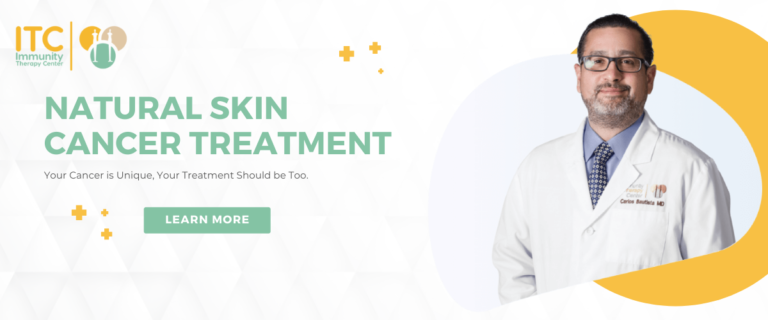When it comes to skin cancer, one of the first questions many patients ask is, “How common is melanoma?” It’s a fair concern. Unlike a harmless freckl
e or mole that appears with age, melanoma can be life-threatening if ignored. Though not the most frequently diagnosed type of skin cancer, melanoma skin cancer is one of the most aggressive.
Understanding melanoma prevalence, who’s most at risk, and the importance of early detection can help people make more informed choices ab
out prevention and treatment.
How Common Is Melanoma?
So, is melanoma common? While it accounts for a smaller share of total skin cancer cases, it’s considered the most serious form because of how quickly it can spread to other parts of the body, including the lymph nodes. Current data suggest that thousands of patients are diagnosed with melanoma cancer each year, with incidence rates steadily climbing worldwide.1
The incidence of melanoma differs across population groups:
- Age: While the risk increases with age, adolescents and young adults aren’t immune. In fact, melanoma prevalence is among the highest cancers affecting young adults.
- Gender: Men are more likely to be diagnosed later in life, while women tend to see higher incidence rates of melanoma skin cancer earlier, often linked to indoor tanning and cumulative sun exposure.2
- Geography: People living closer to the equator, where ultraviolet radiation is stronger, face an increased risk.3 Areas with high numbers of fair-skinned individuals, such as white populations in North America and Australia, also report higher rates.
These figures show one thing clearly: while melanoma may not be the most common skin cancer, its impact is disproportionately high when looking at deaths and mortality.
Risk Factors and Who Is Most Affected
What exactly raises the risk of melanoma? Several Facts stand out from study after study:
- Genetics: A family history of melanoma puts patients at an increased risk.
- Skin type: Fair skin, light-colored eyes, and moles that appear irregular all contribute to a higher susceptibility.
- Sun exposure: Severe sunburns, repeated tanning, and a lack of consistent sunscreen use over the years all contribute to the development of melanoma.
- Lifestyle factors, including indoor tanning, prolonged outdoor activities without protection, and certain occupational exposures to radiation, increase the risk.
Children rarely develop melanoma, but when they do, it’s often more invasive. Meanwhile, young adults and women who engage in tanning face a significantly increased risk.
Importance of Early Detection and Monitoring
The truth is sobering: while melanoma prevalence is lower than other types of skin cancer, it contributes to a higher share of cancer-related deaths. The good news is that early detection dramatically improves outcomes.
Regular skin checks are essential. Patients should look for moles or spots that develop, change in color, or increase in size. Common questions like “Does melanoma cancer itch?” or “Does melanoma bleed?” point to the reality that melanoma skin can present in many different ways. Even a small lesion can be a sign of a disease that shouldn’t be ignored.
Dermatologists recommend that people of all ages perform monthly self-exams and schedule yearly professional checks. Bringing detailed information about changes you’ve noticed gives your doctor a clearer picture of what’s happening.
Holistic Support and Alternative Therapies at Immunity Therapy Center
Many people search for answers to “How long can you live with untreated melanoma?” But the reality is that without care, this aggressive skin cancer tends to spread quickly, which is why early detection and exploring treatmen
t and therapy options are so important.
At Immunity Therapy Center, our philosophy is built on alternative medicine as the first line of defense. For patients facing melanoma, this means individualized plans designed to
support the body while addressing the underlying cancer.
Here are some of our therapies for melanoma:
- Localized Hyperthermia uses controlled heat to weaken melanoma cells and support the immune system for patients seeking non-invasive treatment.
- Sonodynamic Therapy combines ultrasound with sensitizing agents to target melanoma skin cancer while protecting healthy skin and reducing the incidence of damage.
- Insulin Potentiation Therapy (IPT) utilizes insulin to deliver lower, gentler doses of anti-cancer agents directly to abnormal cells, providing individuals with alternative treatment options.
Instead of framing alternative therapies as “complements,” ITC positions them as primary, effective paths toward healing. This approach gives patients who are searching for more natural options hope beyond conventional treatment.
Living With Awareness: Taking the Next Step
So, how common is melanoma? It may not be the most common form of skin cancer, but its seriousness makes awareness critical. By understanding incidence rates, knowing your risk, and committing to regular skin checks, you give yourself the best chance at early detection and improved outcomes.
Every patient deserves not only effective options but also compassionate support along the journey. Whether you’ve just been diagnosed, are exploring holistic melanoma treatment paths, or are simply educating yourself, ITC is here to provide information, hope, and holistic care.
Your skin tells a story. Don’t ignore the signs. If you have concerns about melanoma skin cancer, reach out, ask questions, and take that step toward empowerment and healing with Immunity Therapy Center.
Written By: Dr. David Alvarez
Dr. David Alvarez is a Board Certified Medical Doctor from Universidad Xochicalco and Certified by the American Heart Association (Advanced Cardiovascular Life Support).
Dr. Alvarez has been collaborating with Dr. Bautista as an Assistant Medical Director at the Immunity Therapy Center for over 6 years. He provides daily on site patient care and participates on the medical board on research and development of patient treatment plans and programs. Dr. Alvarez is a knowledgeable and compassionate Doctor committed to helping patients get to where they want to be health wise through a more holistic and comprehensive approach.
Sources:
- National Cancer Institute. Cancer Stat Facts: Melanoma of the Skin. https://seer.cancer.gov/statfacts/html/melan.html
- Oxford Academic. Sex differences in melanoma survival—a GEM study. https://academic.oup.com/jncics/article/9/1/pkaf005/7952021
- American Cancer Society. What Factors Affect UV Risk?. https://www.cancer.org/cancer/risk-prevention/sun-and-uv/sun-damage.html
At Immunity Therapy Center, our goal is to provide objective, updated, and research-based information on all health-related topics. This article is based on scientific research and/or other scientific articles. All information has been fact-checked and reviewed by Dr. Carlos Bautista, a Board Certified Medical Doctor at Immunity Therapy Center. All information published on the site must undergo an extensive review process to ensure accuracy. This article contains trusted sources with all references hyperlinked for the reader's visibility.

